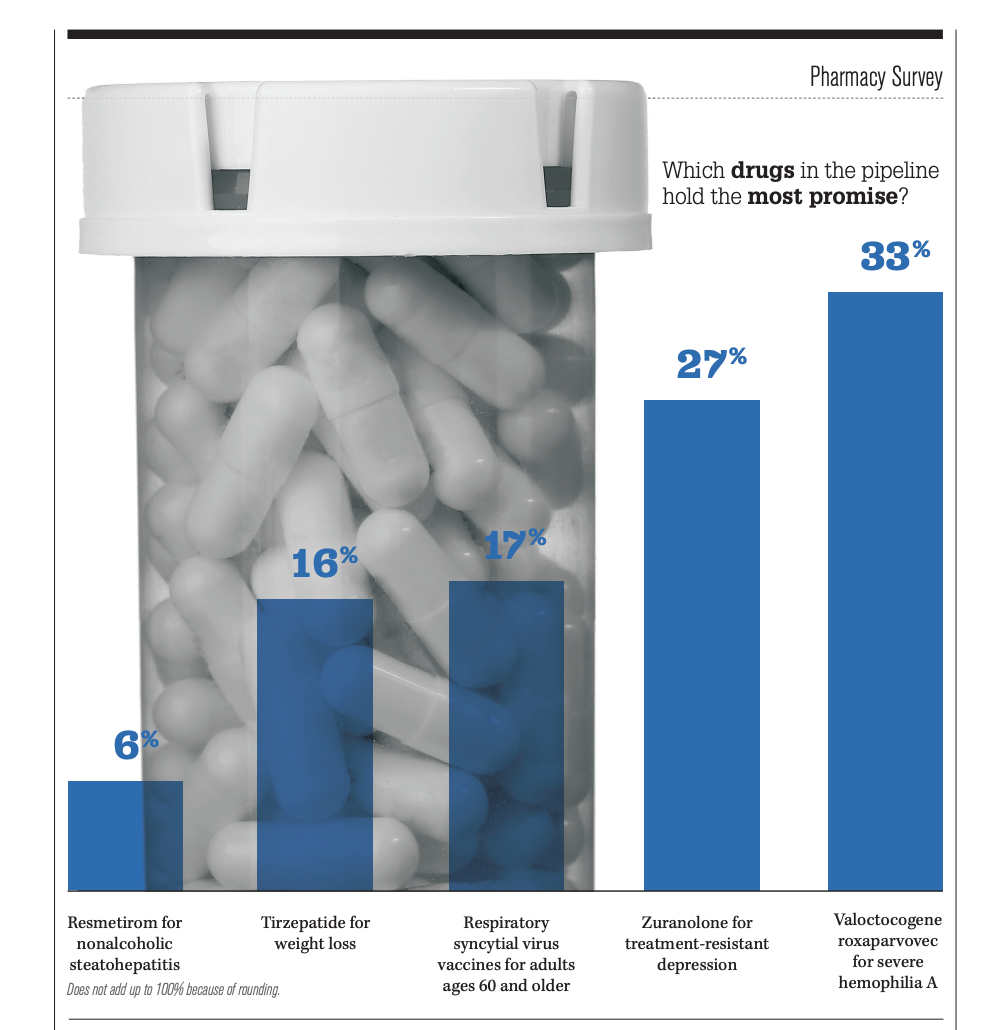Rating Drugs in the Pipeline | 2023 Annual Managed Healthcare Executive Pharmacy Survey
Roctavian (valoctocogene roxaparvovec), the gene therpay for hemophilia A, gets nods as holding the most promise among the drugs in the pipeline.
Roctavian (valoctocogene roxaparvovec), the gene therpay for hemophilia A, gets nods as holding the mRoctavian (valoctocogene roxaparvovec), the gene therpay for hemophilia A, gets nods as holding the most promise among the drugs in the pipeline.ost promise among the drugs in the pipeline.
Payers, providers, pharmaceutical companies all keep an eye on the “drug pipeline,” industry shorthand for drugs in mid- and late-stage development. FDA approval is a finish line and 14 new drugs have crossed that threshold so far this year, including the Leqembi (lecanemab), a new Alzheimer’s drug, in January, and just last week, Qalsody (tofersen), a drug for a small minority of people with amyotrophic lateral sclerosis who have certain gene changes.
The 2023 Annual Managed Healthcare Executive Pharmacy Surveyasked respondents to rate which drugs “hold the most promise” among several in the much-heeded pipeline. Valoctocogene roxaparvovec, a gene therapy for hemophilia A, garnered the most support (33%). The FDA is currently expected to announce whether it has approved on June 30. BioMarin Pharmaceutical Inc. is planning to market valoctocogene roxaparvovec under the brand name Roctavian.
After Roctavian, 27% of the 311 respondents ranked zuranolone, a treatment for major depressive disorder and postpartum depression, as holding the most promise, followed by the vaccines for respiratory syncytial virus (17%), tirzepatide, marketed as Mounjaro, for weight loss (16%) and resmetirom (6%), a new drug for nonalcoholic steatohepatitis, or NASH.

The survey also asked respondents to which gene therapies will have the most significant impact. Zynteglo (betibeglogene autotemcel) for beta thalassemia garnered the most selections, followed by Hemgenix (etranacogene dezaparvovec) for hemophilia B, Skysona (elivaldogene autotemcel) for cerebral adrenoleukodystrophy and Adstiladrin (nadofaragene firadenovec) for bladder cancer.

The online survey was conducted Feb. 14-28. The respondents were spread fairly evenly across the various sectors of the U.S. healthcare industry, with 20% self-identifying as working for hospitals, 22% for physician practices, 19% for pharmacy benefit managers, 16% for payer organizations, 13% for drug and device manufacturers and the rest in a variety of sectors.
Unrealistic Portrayals of Cardiac Arrest in Contemporary Film | ACC 2025
March 31st 2025Cardiac arrests in contemporary film are largely inaccurate when it comes to survival rate and etiology, according to a poster presented today at the American College of Cardiology conference held March 29 to 31 in Chicago.
Read More
Breaking Down Health Plans, HSAs, AI With Paul Fronstin of EBRI
November 19th 2024Featured in this latest episode of Tuning In to the C-Suite podcast is Paul Fronstin, director of health benefits research at EBRI, who shed light on the evolving landscape of health benefits with editors of Managed Healthcare Executive.
Listen
In this latest episode of Tuning In to the C-Suite podcast, Briana Contreras, an editor with MHE had the pleasure of meeting Loren McCaghy, director of consulting, health and consumer engagement and product insight at Accenture, to discuss the organization's latest report on U.S. consumers switching healthcare providers and insurance payers.
Listen
Winrevair Reduced Risk of Morbidity and Mortality by 76% in PAH | ACC 2025
March 31st 2025In the ZENITH trial, Winrevair was evaluated based on a composite endpoint of all-cause death, lung transplantation or disease-related hospitalization for patients with pulmonary arterial hypertension.
Read More
Clopidogrel Beat Aspirin in Preventing Heart Attacks After PCI | ACC 2025
March 31st 2025Clopidogrel monotherapy may be an alternative to aspirin for prevention of cardiac events in high-risk patients after percutaneous coronary intervention, according to a new study presented at ACC 2025.
Read More